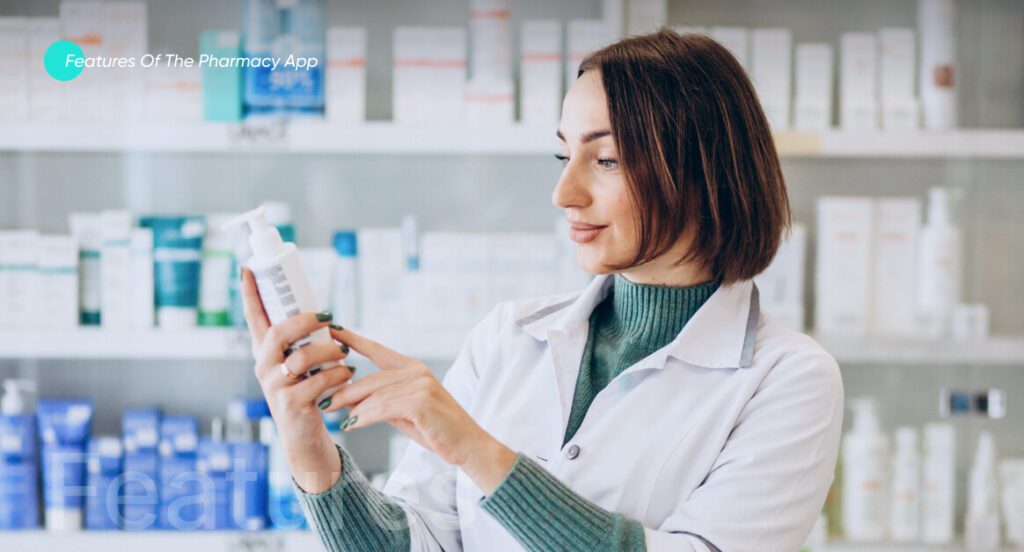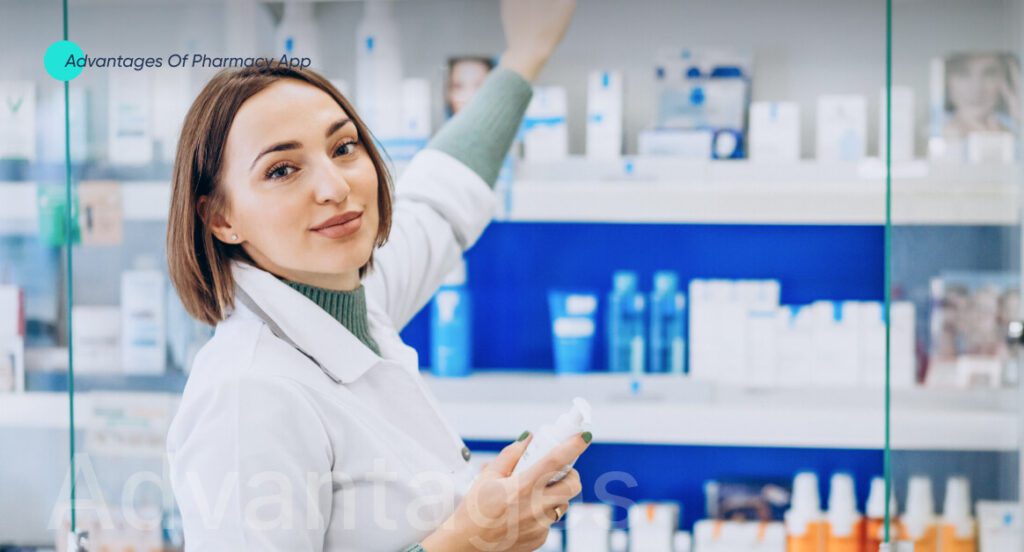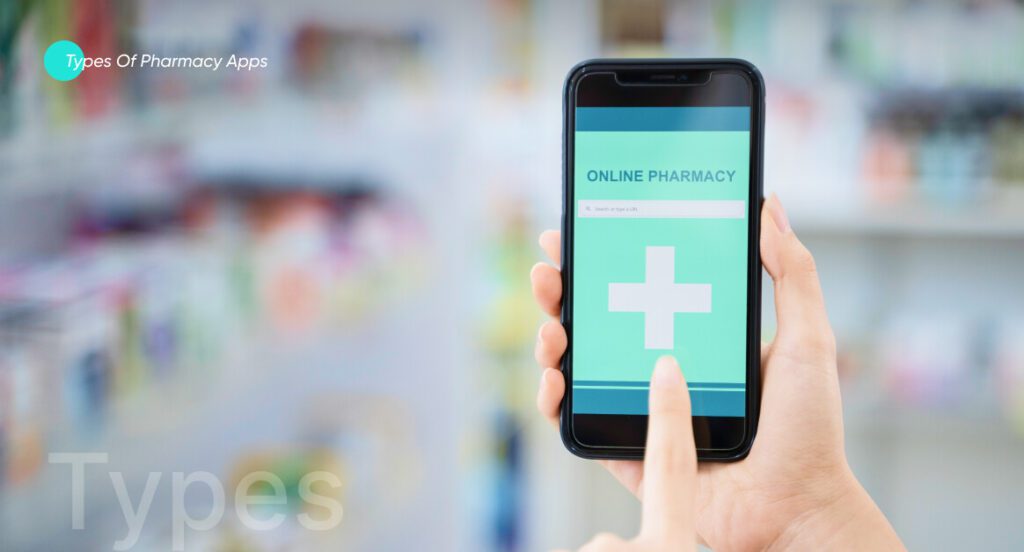A Prescription for Success: Navigating Pharmacy App Development
There is a constant rise in health issues. Most individuals suffer from a medical problem, disease, or disorder regardless of age. And as such, medicines have become essential for many households. Buying drugs from conventional pharmacies can cause inconvenience and longer wait times. In addition, there can be limited stock availability and lesser price transparency. Nevertheless, thanks to the pharmacy app development, online pharmacies have become commonplace, allowing users to order and receive medicines at any time without the hassle of visiting a pharmacy and experiencing other associated drawbacks.
In addition, the healthcare services market is expected to grow to a whopping USD 21.06 Trillion by 2030. Likewise, the global e-pharmacy market is expected to reach USD 362.8 billion by the end of 2031. These promising figures present countless opportunities for entrepreneurs and developers alike. This article sheds light on crucial steps involved in pharmacy app development.
Harness the power of the pharmacy app development services for success – Check Our Contact Us! ![]()
What are the features of the pharmacy app?

An online pharmacy app comes equipped with numerous features, and for initiating the pharmacy app development process, it is essential to go through these features. Here are some of the main features.
User Profile and Registration
Before ordering medicines, users must register their profile by providing information such as age, sex, and health-related queries. This information can be helpful if patients intend to buy medicine with age or health restrictions.
Search and Filter
The search feature allows users to search for their required medicines by typing the medicine’s name. The filtering option refines the search and will enable users to look for specific medications.
Payment Options
This feature provides your users with various payment options. The payment options feature includes credit and debit cards, online wallets, bank transfers, and mobile payments. This feature also provides the option of saving card details, which saves time for regular buyers.
Upload Prescription
This feature allows users to upload their prescription from the doctor so pharmacists can access it promptly. These prescriptions also prove the medicines being recommended by certified health professionals.
Notifications
Users can receive important notifications regarding order status, discounts, and promotions. Don’t overdo the notifications, as they can bother some customers.
Communication
Enable a feature that allows seamless communication between a user and pharmacist. This communication channel is vital so customers can ask crucial questions about medicines and receive timely responses.
Catalog
This catalog contains data about all the medicines available in the pharmacy. This relevant information about the medications, includes the details related to the pharmaceutical companies, drug composition, and quantity.
Order Tracking
Users can monitor the status of their package through real-time delivery tracking. The app notifies users with tags like ‘order received,’ ‘in progress’ and ‘order delivered.’
Order History
This feature allows users to observe the tracking history of their orders. Users can check the medication name, order date, and quantity. It keeps track of users’ medication usage and purchase records and helps reorder prescriptions.
Advantages of pharmacy app development?

There are numerous benefits of pharma app development for users and investors. The following are the few key advantages.
Client Convenience
When assessing the advantages of online pharmacy app development solutions, the first thing that comes to mind is the ‘convenience’ that they offer. Users can order and receive medicines from anywhere and at any time without visiting the pharmacy personally. Similarly, patients can smoothly order prescription refills through the pharmacy apps.
Time Optimization
Pharmacy apps are effective and speedy at performing tasks. These apps save time and automate time-consuming tasks such as ordering medicines, prescription refills, and medical records. They ensure time optimization for users and streamline their medical schedule.
Medication Management and Prescription Refills
Pharmacy apps allow customers to manage their medicines efficiently. Medication reminders, dosage, and drug information in the pharmacy apps ensure better medication management. Similarly, users can effortlessly order prescription refills when they run out of essential medications.
Enhanced Customer Retention and Engagement
A pharmacy app is also a medium to engage with your customers. You can increase customer interaction through emails, notifications, reminders, news, promotions, and discount offers. In addition, these aspects can also serve to build customer loyalty, leading to better customer retention.
Strong Brand Recognition
Besides increasing customer engagement and retention, pharmacy apps are crucial in carving a robust brand identity. A strong brand recognition can lead to profit generation and ensure a competitive advantage in the market.
Market Advancement
There is considerable demand for digital healthcare solutions, including pharmacy apps. The demand for digital healthcare solutions grew, especially after the COVID-19 pandemic. Pharmacy apps are convenient and user-friendly, boosting market growth and attracting more investors.
What are the essential steps for pharmacy app development?
Pharmacy app development is a multistage process. The following is an explanation of the vital development stages of the pharmacy app – from beginning to end.
Market Analysis
At this starting point, it is essential to conduct market and competitor analysis. It will provide you with an overview of the key market trends and insight into the market competition. Similarly, these findings will help you to define your target audience. You can also create a buyer persona to identify. After determining your target audience, you can start developing your business model and make decisions on the features and unique selling points (USP) to be integrated into the pharmacy app.
Find a Development Team
In this stage, you need to find an app development firm. Most entrepreneurs prefer to outsource the development of their apps as it is cost-effective and saves time. When choosing a development team, confirm that the team has relevant experience and expertise. You can check the team’s portfolio and past projects. Similarly, look for the team’s development strategy, technical skills, design prowess, and testing capabilities. Finally, discuss the budget with your development team.
Design
After choosing the pharmacy app developers, the work begins with creating wireframes and prototypes for the app’s UI and UX. In this phase, the UI/UX designers design the app’s layout, visual components, and navigation. Make sure that your designs are responsive and user-friendly, to provide a rewarding user experience.
Development
At this stage, the actual process of pharmacy app development initiates. It entails coding and creating the app’s functionality per the approved designs and requirements. Moreover, the frontend and backend elements are also developed. Likewise, medication databases, prescription management, and integration with APIs alongside other measures, including security, are also implemented in this phase.
Testing and Launch
Make sure that your pharmacy app complies with healthcare data privacy regulations such as HIPAA in the US. Conduct thorough testing to identify and fix any bugs and other security threats. Once the app passes the testing and QA assurance, your app is ready for deployment on app stores. It is necessary to monitor the app’s post-launch performance and release timely updates to improve the performance.
What are the primary types of pharmacy apps?

Before commencing the pharmacy app development process, it is crucial to have knowledge of various types of pharmacy apps. The following are the common types of pharmacy apps available in the market.
Apps for Marketplaces
Pharmacy marketplace apps connect users with nearby pharmacies. In this model, your app selects medications from numerous pharmacists in one place while users choose and order their required drugs. It allows users to buy medicines from an array of pharmacies, which also boosts revenue.
Apps for Online Stores
This app model is ideal for independent pharmacies and medical companies that directly choose to serve their customers. These apps offer customers personalized recommendations, inventory updates, purchases, and home-delivery options.
Apps for Store Chains
Pharmacies with multiple locations or networks use this app model. These apps offer an omnichannel shopping experience to customers in the various locations of pharmacies, helping to increase customer loyalty and drive profits.
Pharmacy Apps for Handbooks
These apps are specifically designed for pharmaceutical organizations, medical professionals, patients, and doctors seeking medicine-related information in one place.
Top 5 Pharmacy Apps
In order to provide you with valuable information on pharmacy app development, the following are the leading five online pharmacy apps.
GoodRx
GoodRx is a famous pharmacy app that helps users find the lowest prices for prescription medications at nearby pharmacies. It also provides coupons and discounts for drugs, which provides the convenience of saving on prescriptions.
Capsule
Capsule remains one of the most popular and frequently used mobile pharmacy apps in the United States. Users can upload their prescriptions after registering their account by filling out a form. Users can schedule the delivery and also expect same-day free delivery.
RxSaver by RetailMeNot
RxSaver helps you compare prescription prices and find discounts at nearby pharmacies. Users can search for specific medications, view pricing information, and access discount coupons. It’s a convenient tool for cost-effective prescription shopping.
Walgreens
Walgreens is a renowned pharmacy chain in the United States. Their mobile app allows users to refill prescriptions, search nearby stores, and purchase a wide variety of health and wellness products.
CVS Pharmacy
CVS Pharmacy, another major U.S. pharmacy chain, offers an app that enables users to refill prescriptions, access prescription history, and find CVS stores. The app also features deals, discounts, and photo printing services.
How much time does it take to create a pharmacy app?
The time required for pharmacy app development depends on numerous factors. They typically include the app’s complexity, features, and the development team’s expertise. A basic pharmacy app can be developed in 3 to 6 months, a feature-rich pharmacy app can take 6 to 12 months, and an advanced pharmacy app can take 12 months or more to develop. These are general estimates; the time required depends on specific requirements and the development team’s expertise.
How much does it cost to develop a pharmacy app?
Various factors influence the cost of a pharmacy app development, including the number of app features, complexity, design, development team’s hourly rate and time frame, types of platforms, regulatory compliance, and third-party integrations. A standard pharmacy app’s cost range will be between $35,000 to $90,000. On the other hand, an advanced pharmacy app can cost you between $55,000 to $150,000.
Empower your pharmacy business with custom pharmacy App Development Services. ![]()
FAQs
Are pharmacy apps profitable?
Pharmacy apps have the potential to be highly profitable. However, the success and profitability of these apps depend on numerous factors, which includes market competition, industry trends, app quality, and monetization strategy.
What technologies are commonly used for pharmacy app development?
Pharmacy apps are usually developed using programming languages like Java or Kotlin for Android and Swift or Objective-C for iOS. Backend development commonly includes technologies like Node.js, Python, or Ruby on Rails. Databases like MySQL or MongoDB are commonly used, and cloud services like AWS or Google Cloud may be employed for hosting.
How do I ensure the security of sensitive data in my pharmacy app?
Security measures should include data encryption, secure user authentication, compliance with healthcare data regulations (such as HIPAA in the United States), regular security audits, and secure data transmission.
How do I monetize my pharmacy app?
There are different monetization strategies that you can use for your pharmacy app. They include in-app advertising, subscription models for premium features, partnerships with pharmaceutical companies, and commissions from medication sales or consultations.
How can I make my pharmacy app noticeable in a competitive market?
To make your app noticeable, focus on providing exceptional user experience, unique features, personalized medication reminders, reliable customer support, and partnerships with healthcare providers. Regularly update your app with the latest medical information and innovations.
Gohar is a seasoned IT writer specializing in leading technologies. He holds a Diploma and Bachelor's degree from the University of London, with professional experience spanning over five years in the IT sector. His expertise involves a keen focus on mobile applications, web apps, blockchain, content management systems, e-commerce, and fintech. Beyond the professional field, Gohar is an avid reader and reads extensively about emerging and innovative technologies.